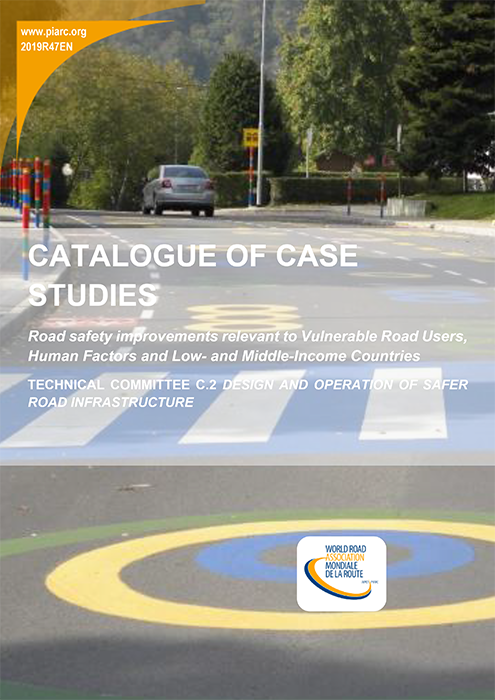Road Safety - Catalogue Of Case Studies - Rapport technique

Knowledge comes from the analysis of successes and un-successes. Case Studies collection represents an important step toward the construction of knowledge.
PIARC Case Studies Catalogue contains the description of a set of interventions designed, implemented and operated worldwide to improve road safety in three specific fields: Vulnerable Road Users (VRUs), Human Factors (HF) and interventions in Low- and Middle-Income Countries (LMICs) . Some of them are examples that already proved to be effective in increasing road safety, others are interventions implemented to solve a specific safety problem that in the future years will prove their effectiveness, other are projects designed to face an identified problem, others are conceptual solutions.
The PIARC Case Studies Catalogue is realized to be enriched in the future with new case studies, showing other applications, different solutions to solve the same problems and better representing the safety interventions applied or applicable in LMICs. It should be also implemented with the addition of future proves concerning the safety impact of the case studies included in the first edition.
A Case Studies Catalogue form a sort of data base available for future post-processing and analysis aimed at identifying best practices once the effectiveness of the described solutions will become clear in future, enriching the existing safety engineering culture.
In the meanwhile, the PIARC Catalogue of Case Studies represents an added value for practitioners and engineers involved in managing and maintaining the existing road network. Looking at how one safety problem has been solved elsewhere, their capacity to identify the most suitable solution to be tailored to their specific traffic and environmental conditions could increases, growing the awareness of road safety.
The report contains a first part where the procedure followed by the WG for the collection of the case studies is presented. Furthermore, some statistics are given about the case studies, followed by three specific paragraphs, one for each topic (VRU, HF, LMIC), where general discussions are presented about the possible countermeasures and a key of lecture is given in order to better going through the reading of the presented case studies.
The report can be used by road engineers and National Road Authorities (NRAs) to assist in designing cost-effective countermeasures where problems exist on the road network.
Information sheet
- Date: 2019
- Author(s): Comité technique / Technical Committee / Comité Técnico C.2 Conception et exploitation d'infrastructures routières plus sûres / Design and Operations of Safer Road Infrastructure / Diseño y Explotación de Infraestructuras de Carreteras más Seguras
- Domain(s): Road Safety / Road Network Operations
- Type: Technical Report
- PIARC Ref.: 2019R47EN
- ISBN: 978-2-84060-604-8
- Number of pages: 385